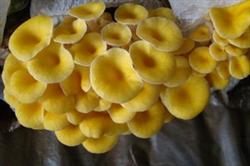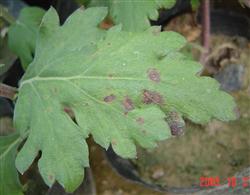Control of Fusarium wilt of chrysanthemum

Fusarium wilt is one of the most important diseases of chrysanthemum. It has occurred in many areas of our country, although the incidence of the disease is not high, but it is extremely harmful. Once the plant is infected, if the control measures are not taken in time, it will lead to rapid plant death. Fusarium wilt of chrysanthemum is a fungal disease. The pathogen is Fusarium oxysporum, which is a soil-borne disease. The most suitable temperature for the disease was 27 ℃-32 ℃. The disease tended to ease at 21 ℃, but no longer occurred when it was below 15 ℃. In recent years, especially in some chrysanthemums which are shaded to control the florescence, it is easier to induce the disease because of the high temperature and poor ventilation in the shed. When the pathogen infects the plant, it initially shows that the lower leaves lose green and yellow, lose luster, and are generally not easy to detect. Then the leaves of the plant began to droop, turn brown and withered, especially the lower leaves began to fall off. Therefore, at the beginning of the plant suffering from symptoms, must not be easily regarded as a lack of water, and delay prevention and treatment. It is necessary to carefully observe whether the stem at the base of the plant is slightly swollen and brown, the epidermis is rough, there are cracks, and white mildew can be seen when the humidity is high. When the stem is cross-cut or longitudinally cut, it can be seen that the vascular bundle turns brown or dark brown. The plant can also be removed from the pot, and the roots infected by bacteria can be seen to blacken and rot. In the prevention of chrysanthemum wilt, one is to select disease-resistant varieties and collect branches from disease-free plants to propagate. The second is to carry out soil disinfection and regularly use fungicides to sterilize. Third, to control soil water content, it is appropriate to choose a matrix with good drainage. The fourth is to master the plant density in order to facilitate ventilation. When the plant is infected by germs, it must be applied quickly. With more than 50% carbendazim treatment, the effect is good, the method is as follows: in the plant condition, the preparation of carbendazim 200-400 times solution, plant root irrigation, and spray the whole plant. At the beginning of the first day and the second day, twice in a row, once on the fourth day and once on the sixth day, under normal circumstances, it can be recovered with four or five times of medicine. But some seriously sick plants must be pulled out and had better be burned. In addition, you can also use 25% benzoate powder 200-400 times, or 50% benzoate emulsion 800 times, the method is the same as carbendazim, the effect is also good.
- Prev

Problems needing attention in the production of Pleurotus ostreatus
Pleurotus ostreatus, due to the recent high market price, there are more and more growers, but due to the low conversion rate of Pleurotus ostreatus, only one tide of mushroom is collected, the nutrition in the waste rods after production is still very rich, if it can not be recycled, it not only causes a waste of resources, but also pollutes the environment.
- Next

Symptoms and pathogens of black spot of chrysanthemum
Chrysanthemum black spot, also known as brown spot, spot blight. The disease occurs in chrysanthemum cultivation areas. In addition to harming chrysanthemum, it can also damage many kinds of Compositae plants, such as wild chrysanthemum, chamomile, pyrethrum and so on. After the plant was damaged, the leaves of the light ones withered and fell off, and the serious ones died of the whole plant. Seriously affect the growth and ornamental of the plant. Symptoms.
Related
- Fuxing push coffee new agricultural production and marketing class: lack of small-scale processing plants
- Jujube rice field leisure farm deep ploughing Yilan for five years to create a space for organic food and play
- Nongyu Farm-A trial of organic papaya for brave women with advanced technology
- Four points for attention in the prevention and control of diseases and insect pests of edible fungi
- How to add nutrient solution to Edible Fungi
- Is there any good way to control edible fungus mites?
- Open Inoculation Technology of Edible Fungi
- Is there any clever way to use fertilizer for edible fungus in winter?
- What agents are used to kill the pathogens of edible fungi in the mushroom shed?
- Rapid drying of Edible Fungi

